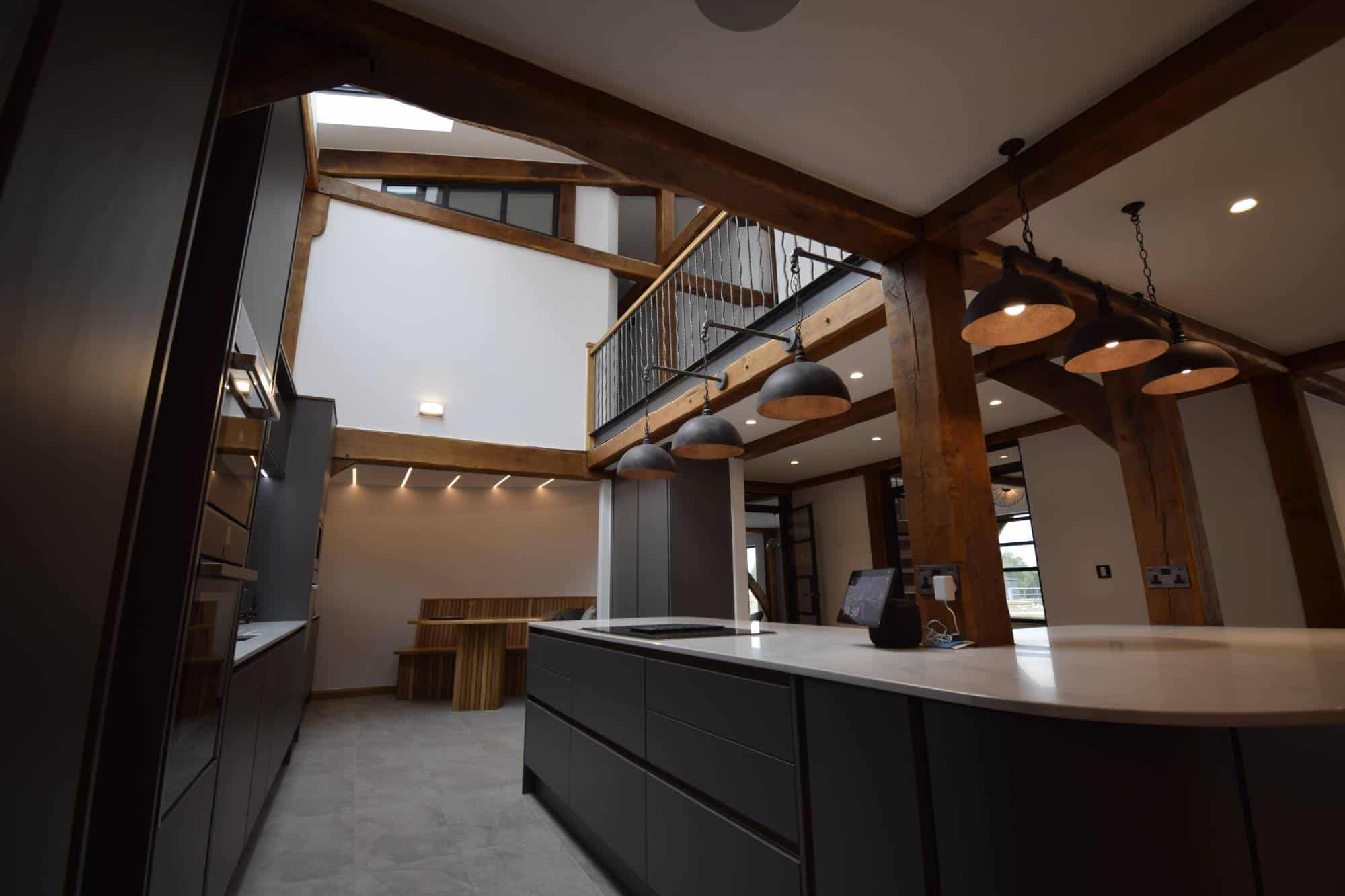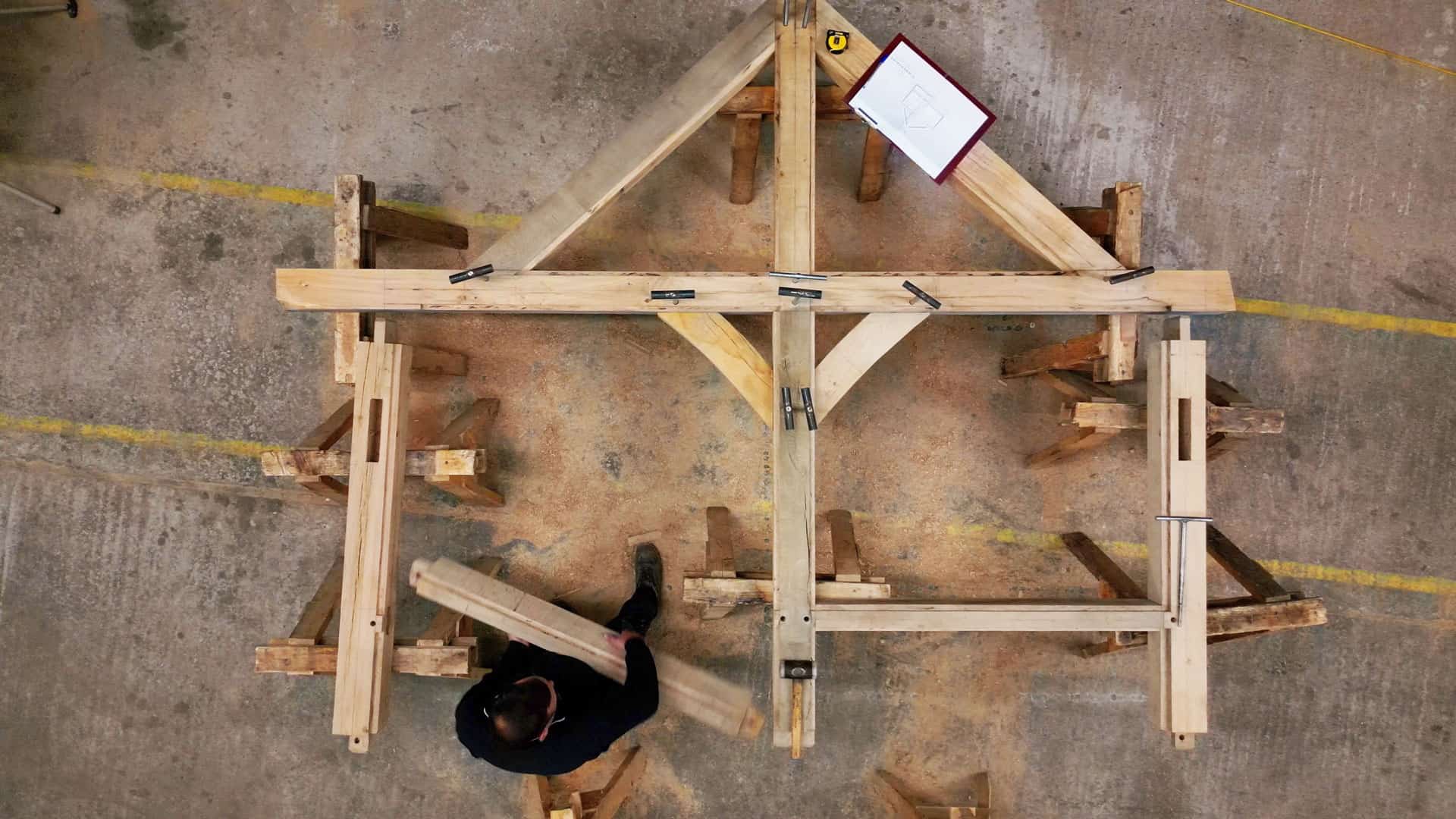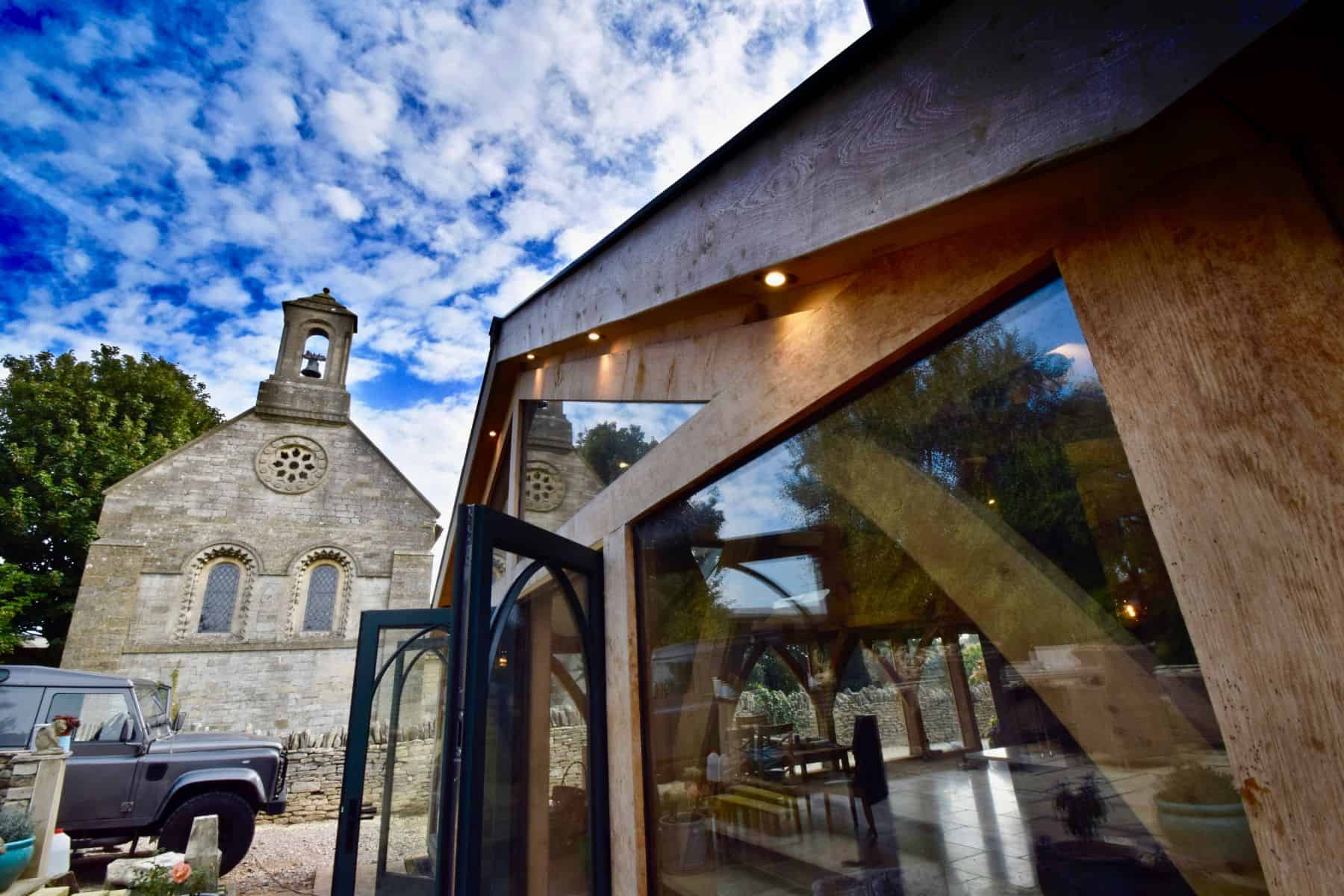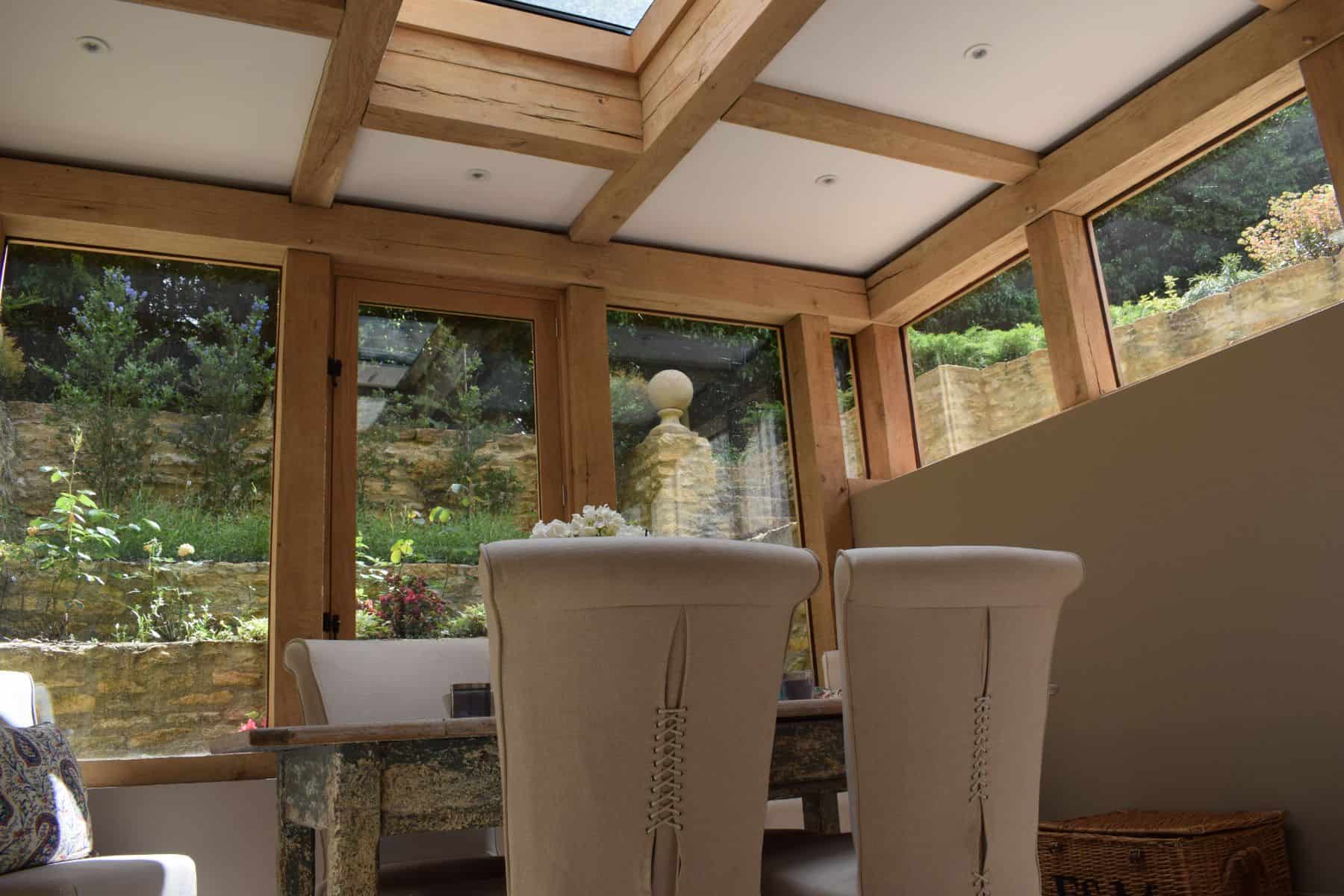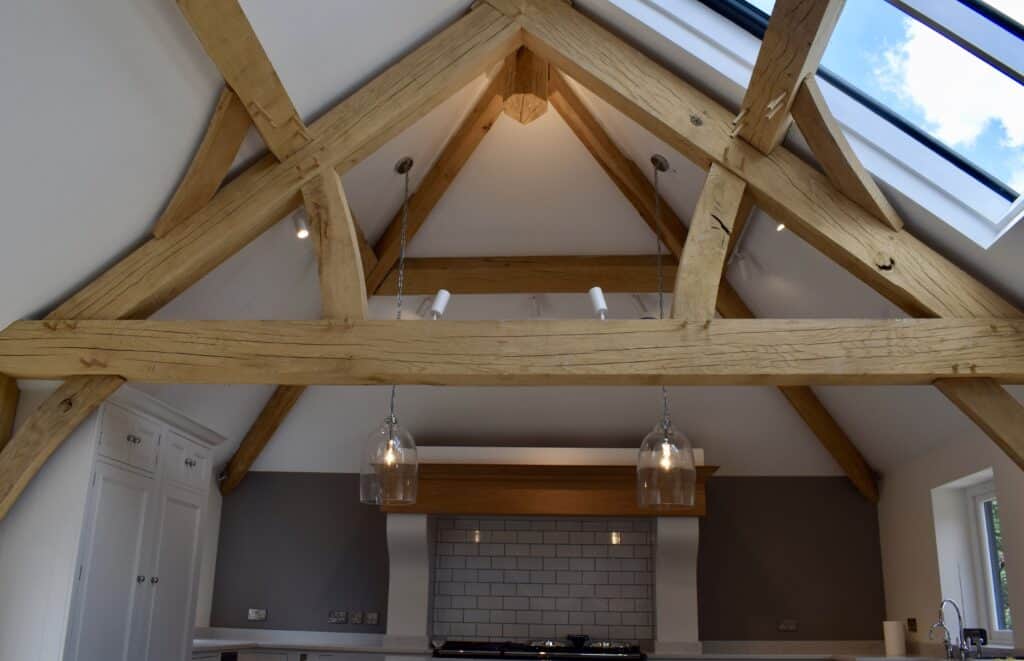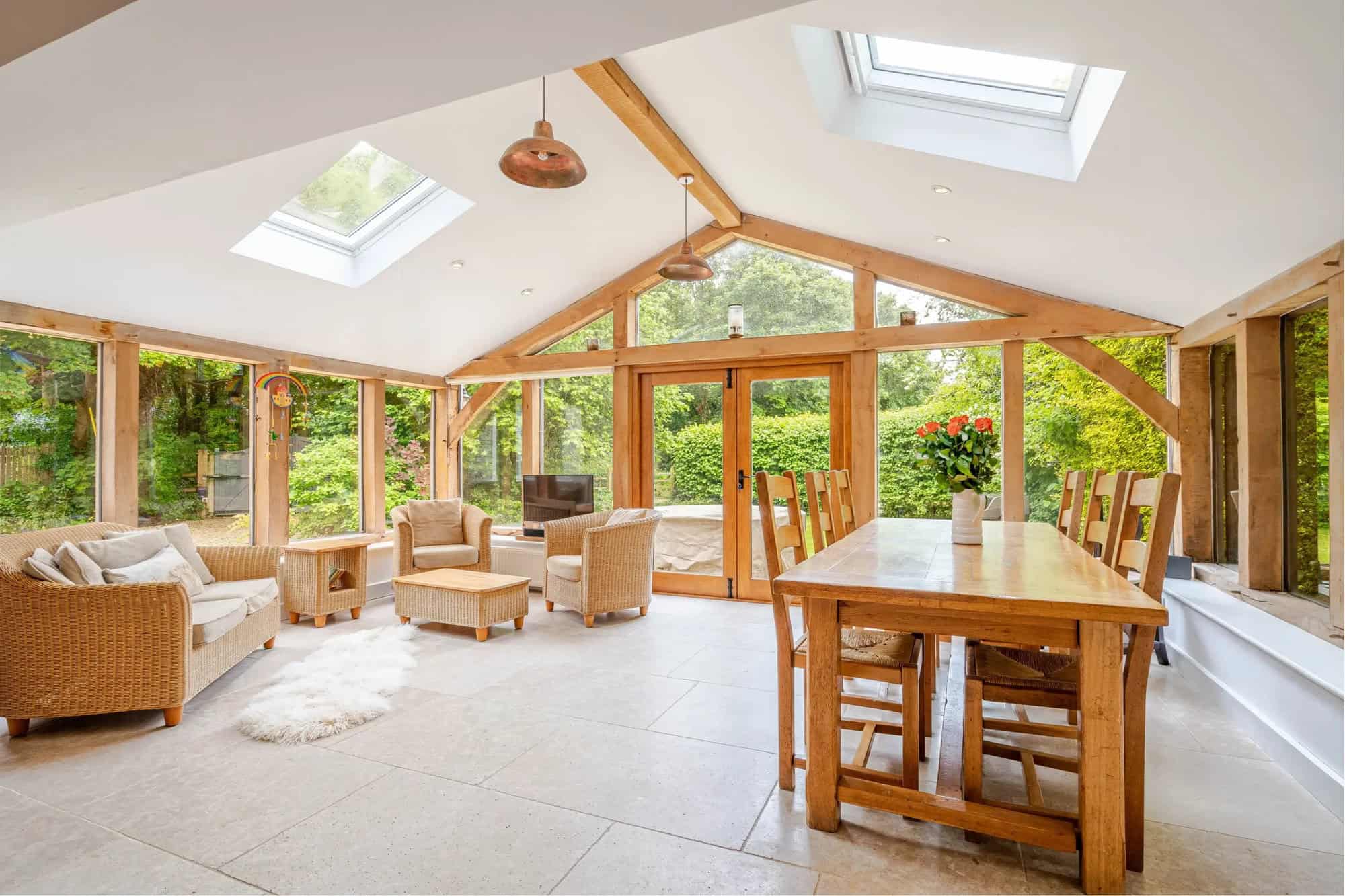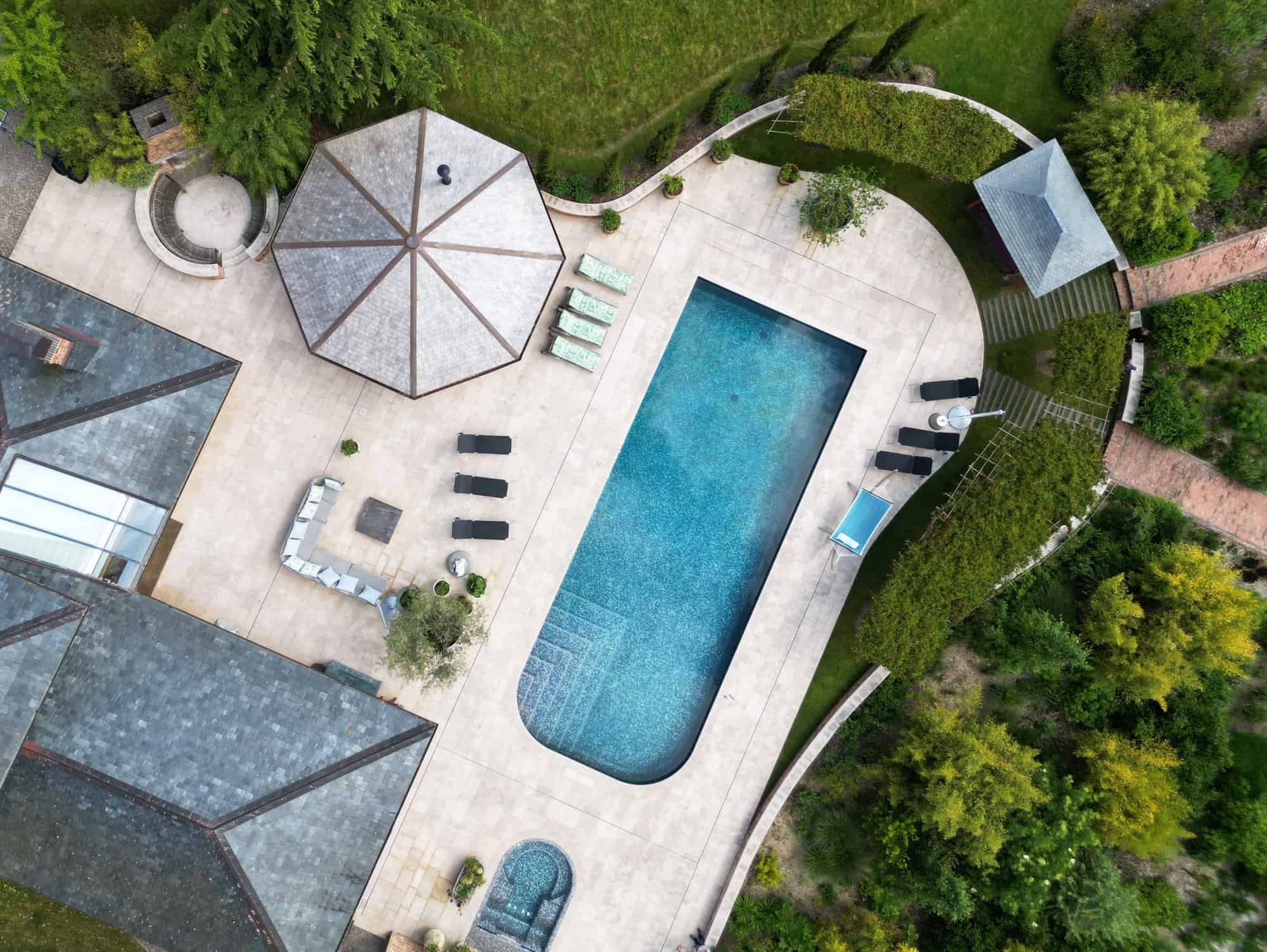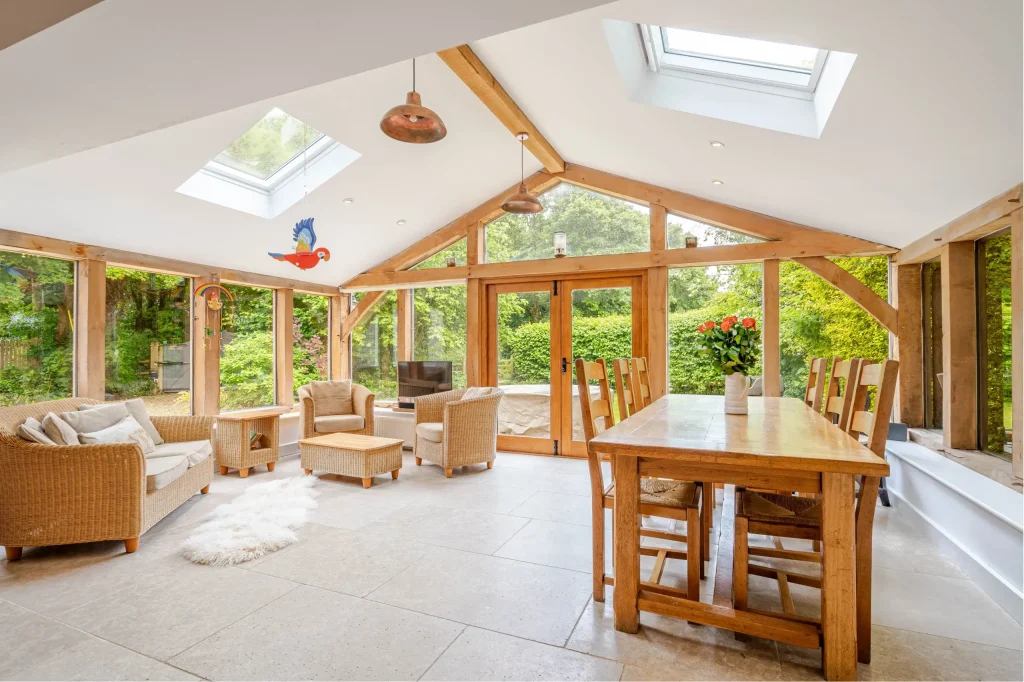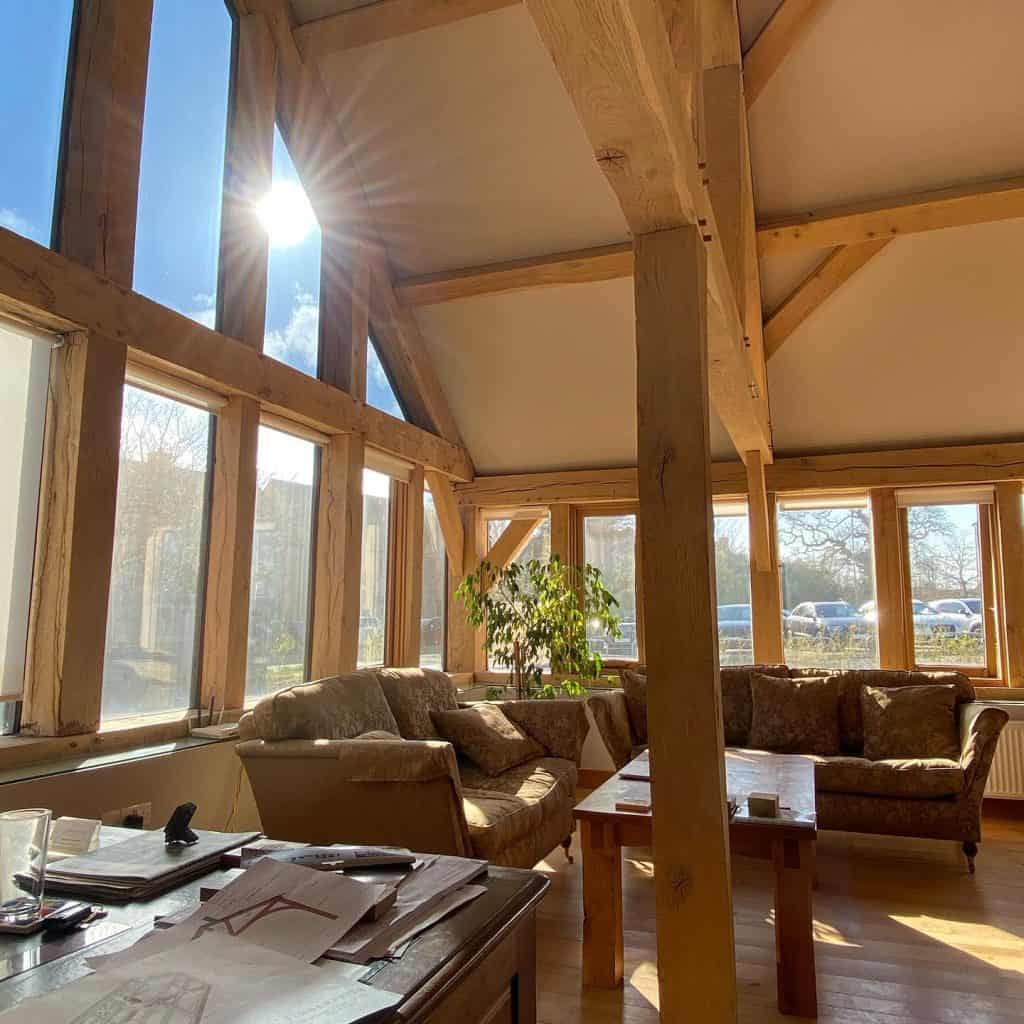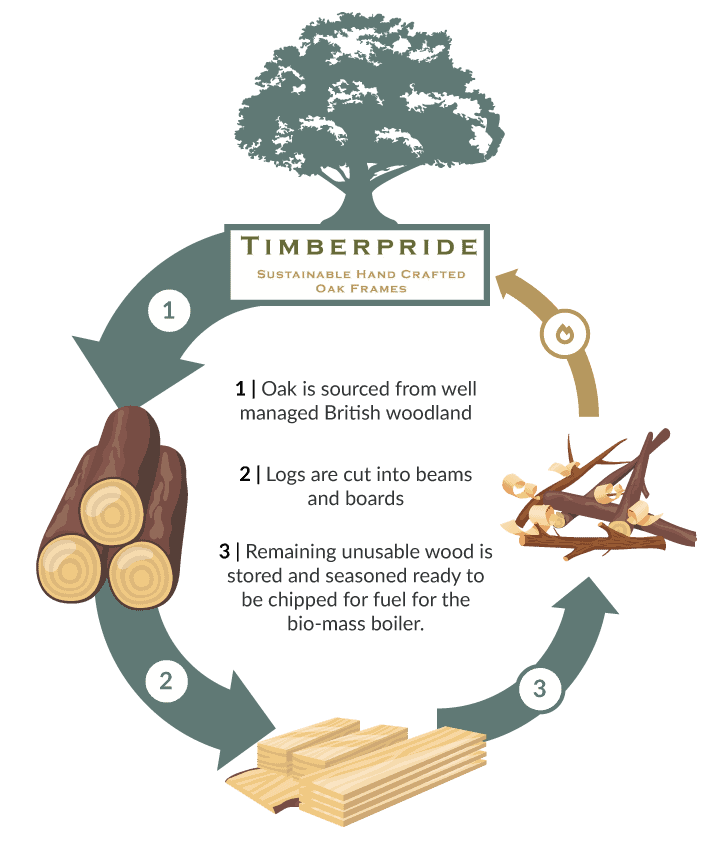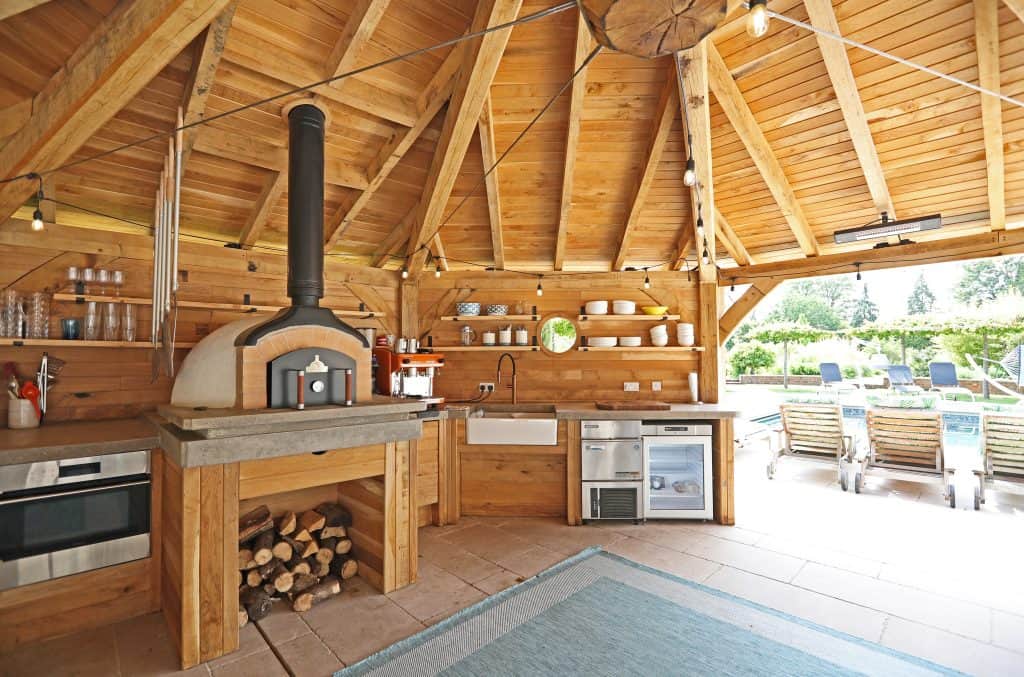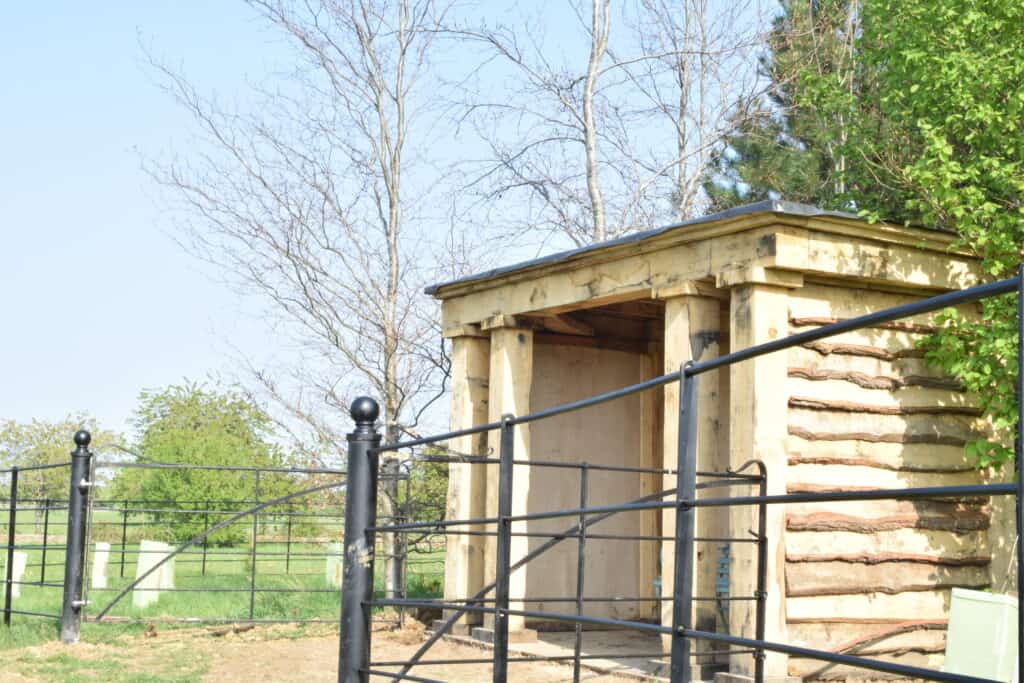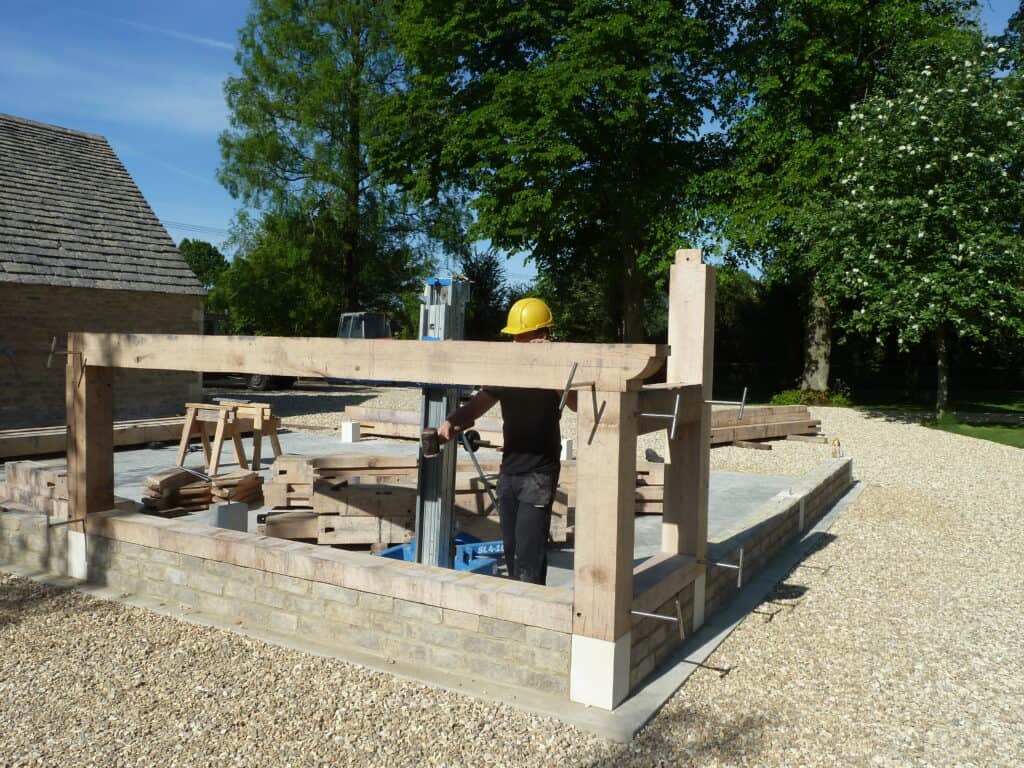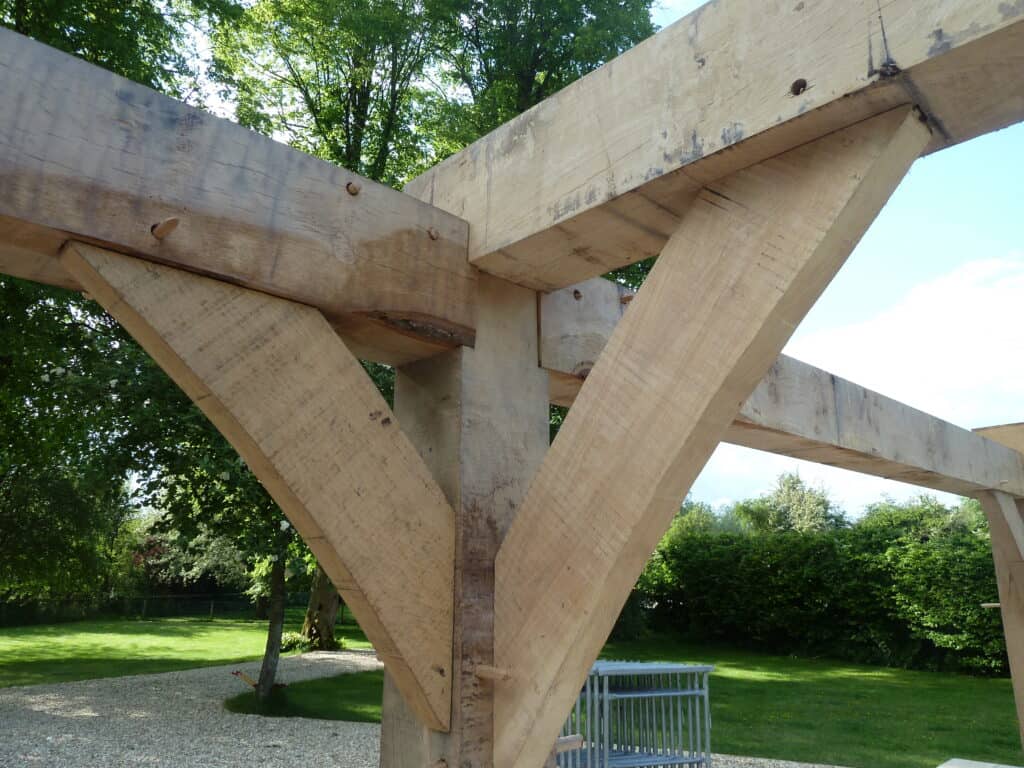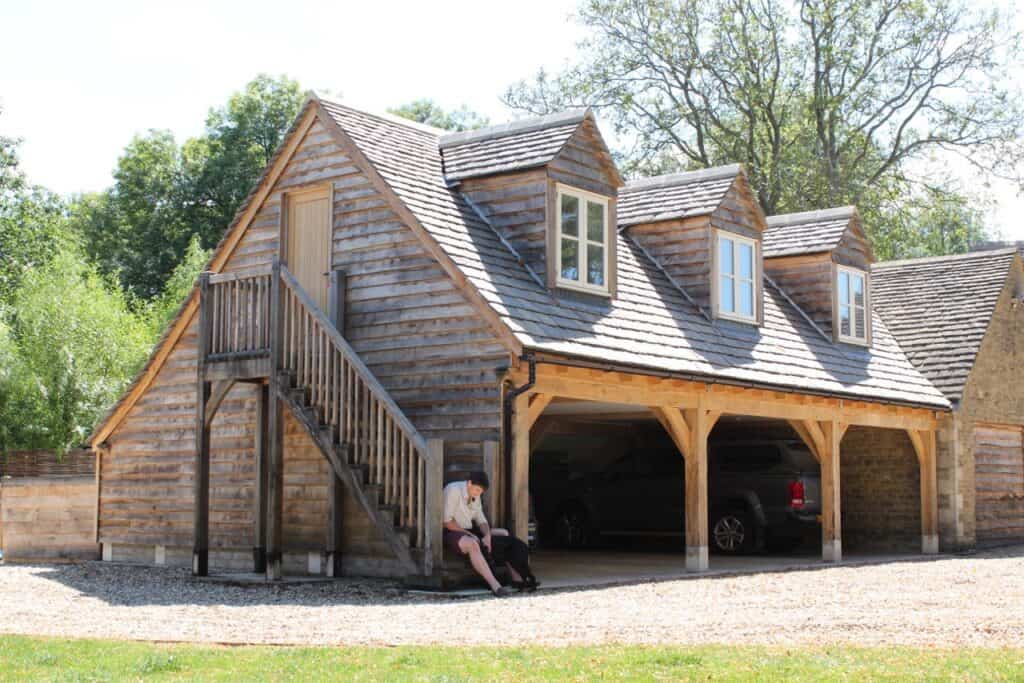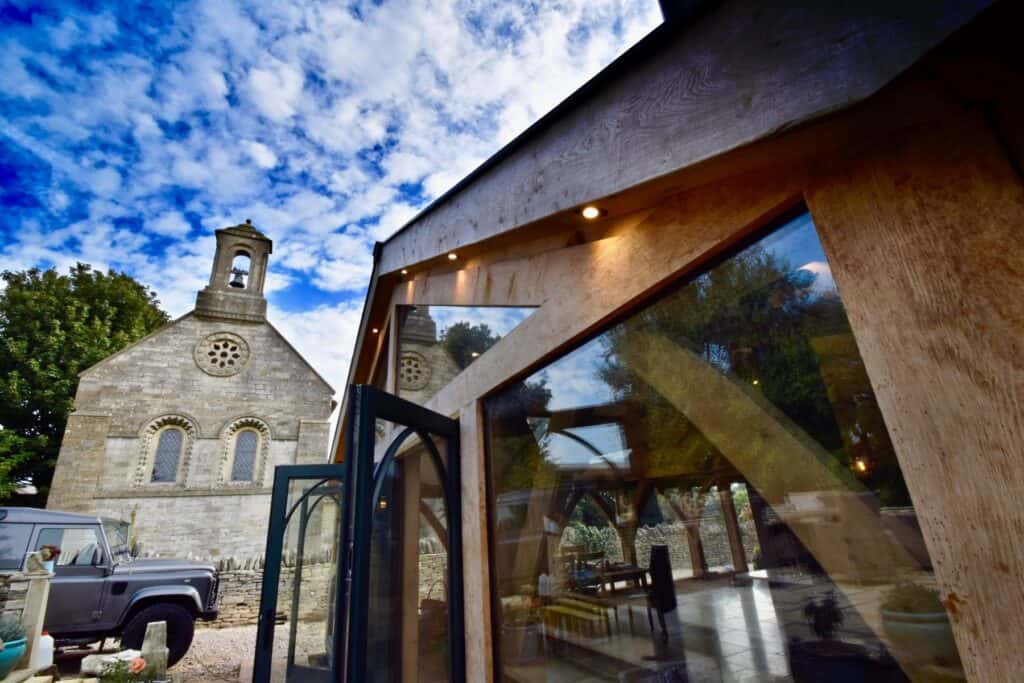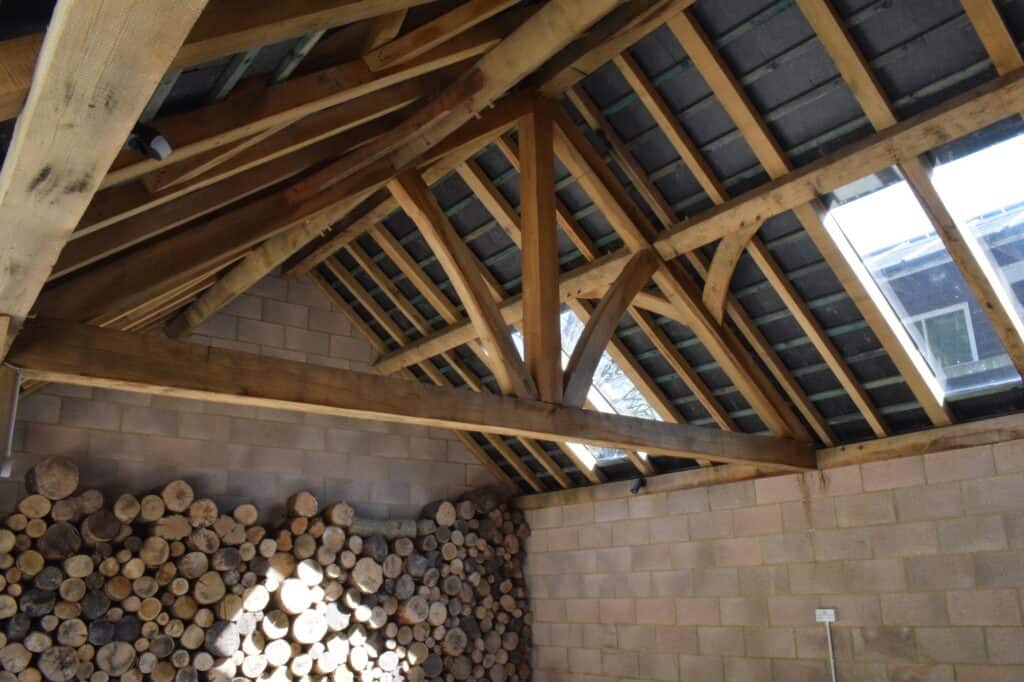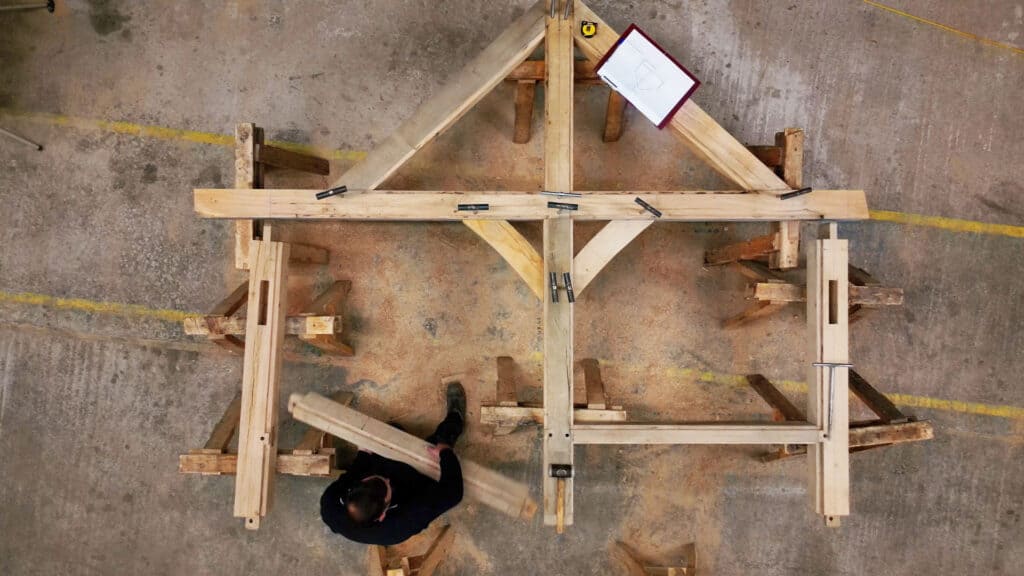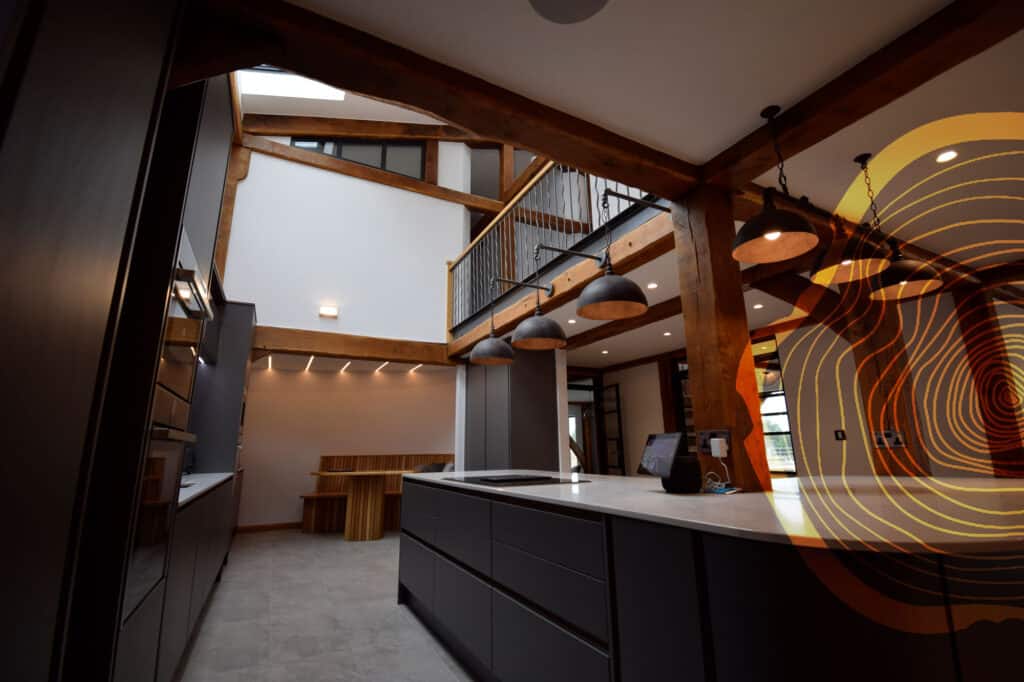We source all of our oak from British forests. Every single oak structure we build has been grown, milled and crafted in the UK ready for your home.
A closer look at why we choose to work with oak at Timberpride…
Durability:
Oak’s inherent strength and longevity ensure your building stands the test of time. Whether it’s an oak-framed extension or an oak-framed garage, its durability offers a solid, secure investment for years to come.
Standout Factor:
Each piece of oak is unique, with rich grains and warm tones that bring character to any structure. An oak conservatory creates a stunning, light-filled space, while an oak orangery blends timeless appeal with practicality.
Versatility:
Oak adapts effortlessly to traditional and modern designs. It’s perfect for enhancing a period property with a classic extension or creating a contemporary conservatory that connects indoor and outdoor living spaces seamlessly. At Timberpride, we craft each oak-framed building with care and precision, ensuring it complements your home and vision perfectly.


